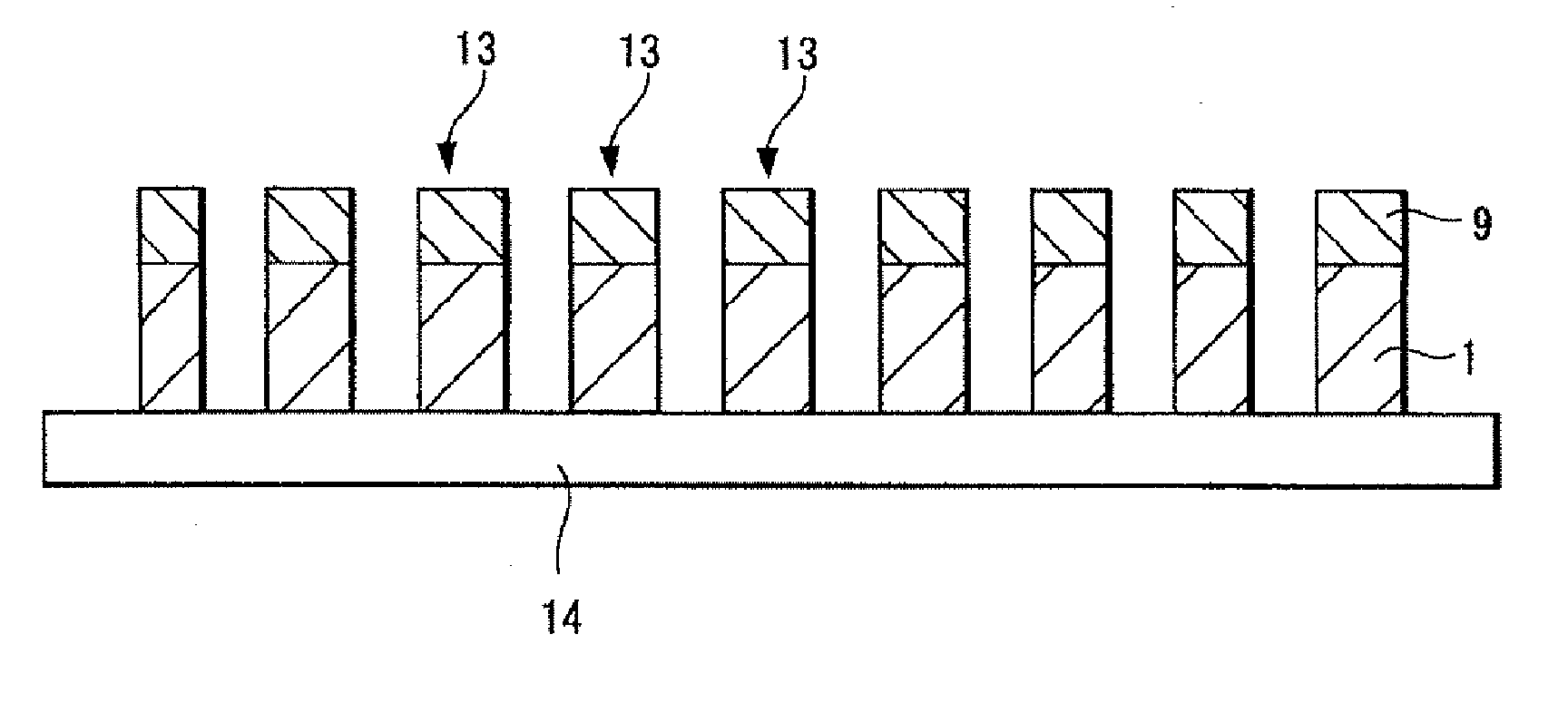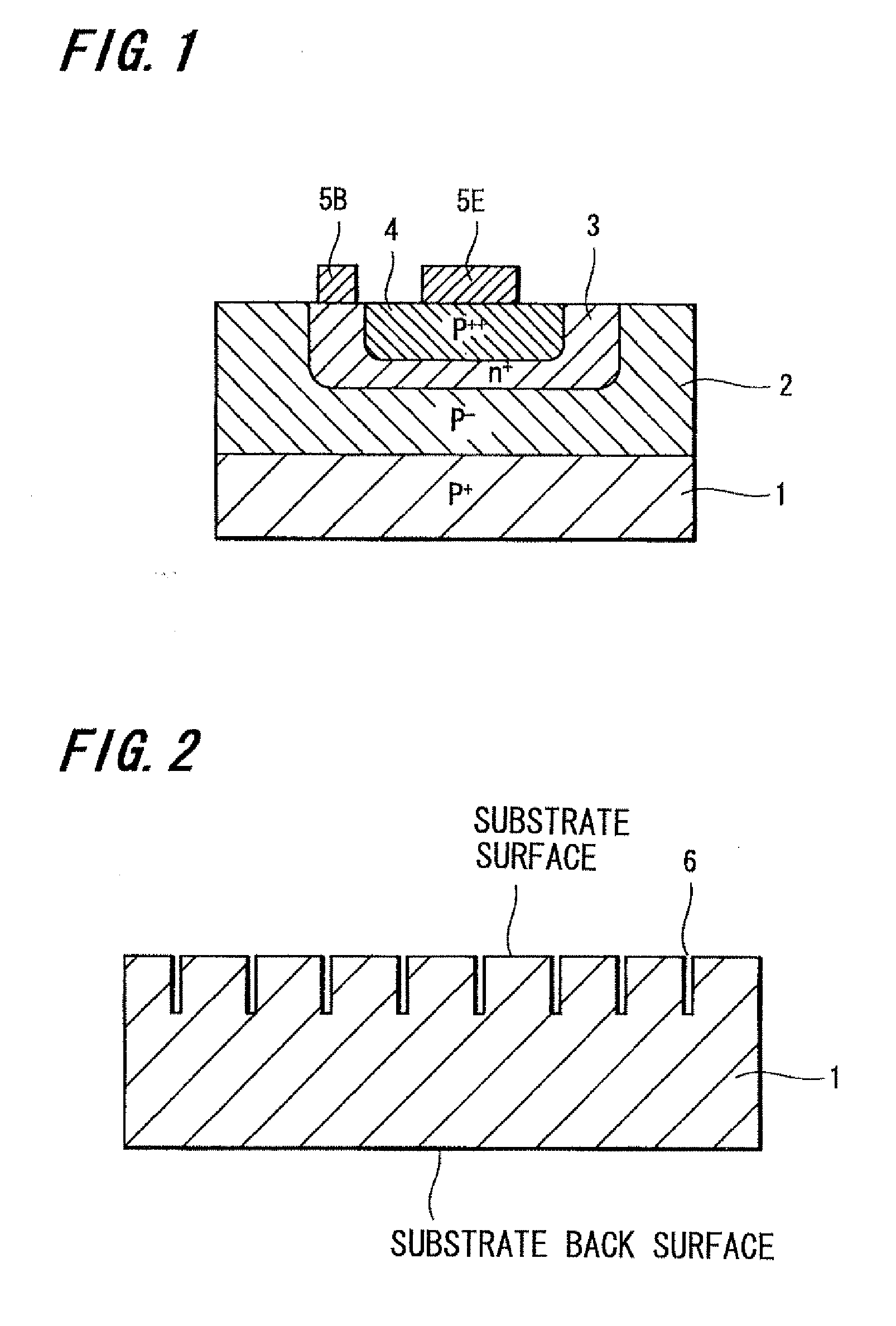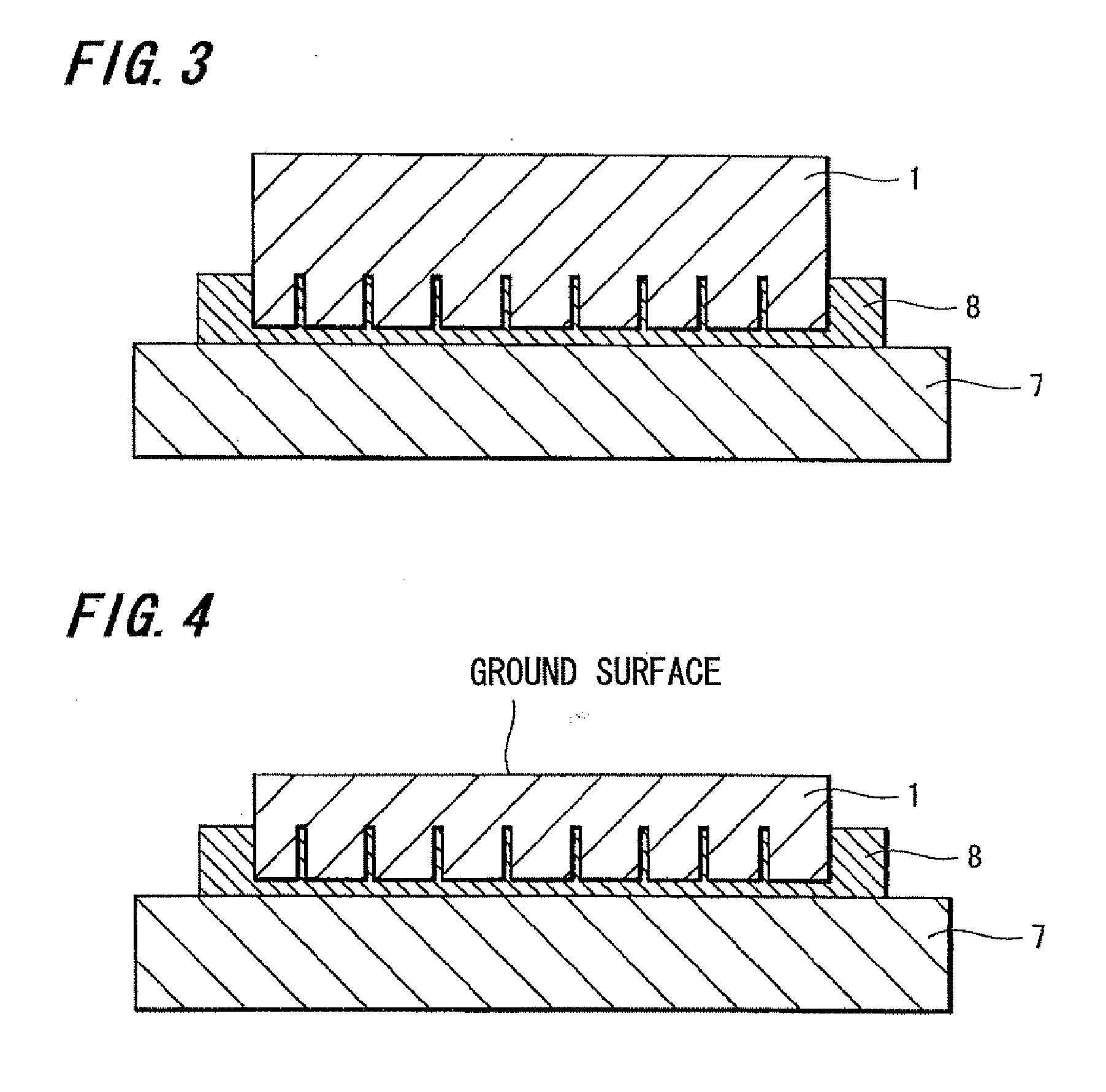Method of manufacturing semiconductor device
- Summary
- Abstract
- Description
- Claims
- Application Information
AI Technical Summary
Benefits of technology
Problems solved by technology
Method used
Image
Examples
Embodiment Construction
[0031]An embodiment of the present invention will be described below with reference to drawings. However, the present invention is not limited thereto.
[0032]FIG. 1 shows a schematic cross-sectional view of a semiconductor element having a standard planar pnp transistor structure. There will be described below an embodiment of the manufacturing method of the present invention including a method for heat-treating a semiconductor element having the pnp transistor structure.
[0033]First, a semiconductor element having a pnp transistor structure is formed on a substrate 1 as shown in FIG. 1. A semiconductor substrate, which is here a silicon substrate, is used as the substrate 1. The substrate is not particularly limited in terms of size and may be a typical silicon substrate having a diameter of 200 mm and a thickness of about 500 μm, for example. The semiconductor element (device structure) is formed as a pnp transistor by forming a p− epitaxial layer 2 on the p+ semiconductor substrate...
PUM
| Property | Measurement | Unit |
|---|---|---|
| Particle size | aaaaa | aaaaa |
Abstract
Description
Claims
Application Information
 Login to View More
Login to View More - R&D
- Intellectual Property
- Life Sciences
- Materials
- Tech Scout
- Unparalleled Data Quality
- Higher Quality Content
- 60% Fewer Hallucinations
Browse by: Latest US Patents, China's latest patents, Technical Efficacy Thesaurus, Application Domain, Technology Topic, Popular Technical Reports.
© 2025 PatSnap. All rights reserved.Legal|Privacy policy|Modern Slavery Act Transparency Statement|Sitemap|About US| Contact US: help@patsnap.com



